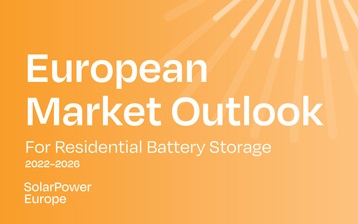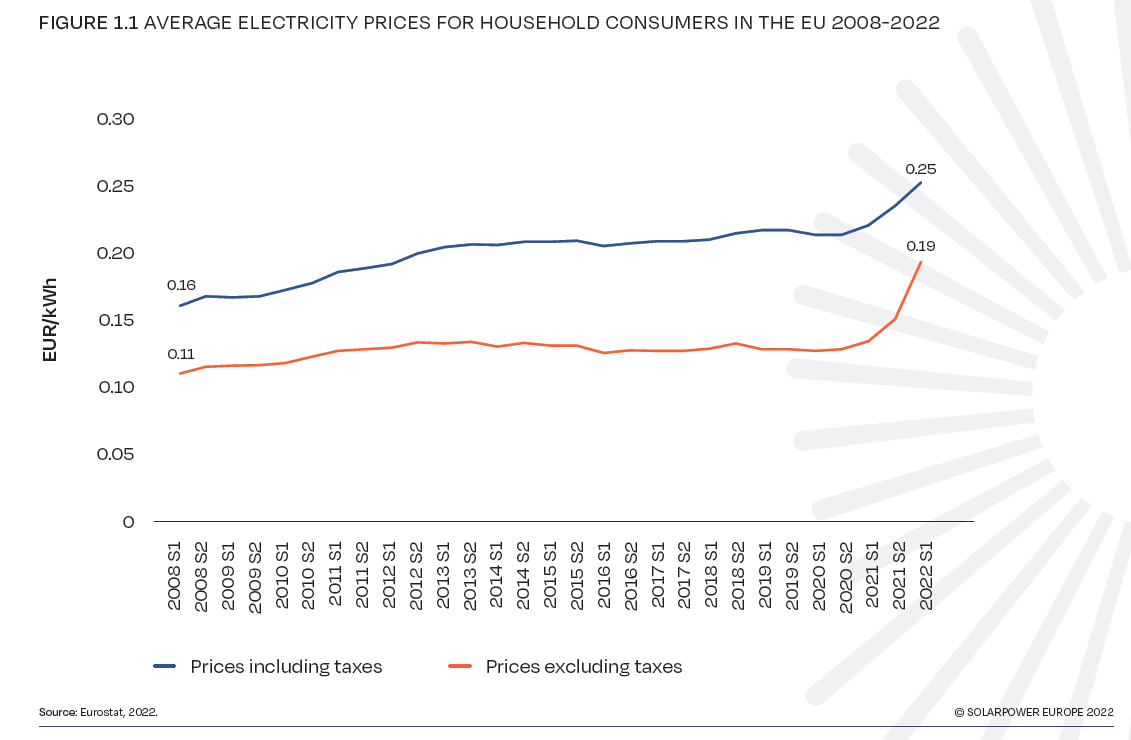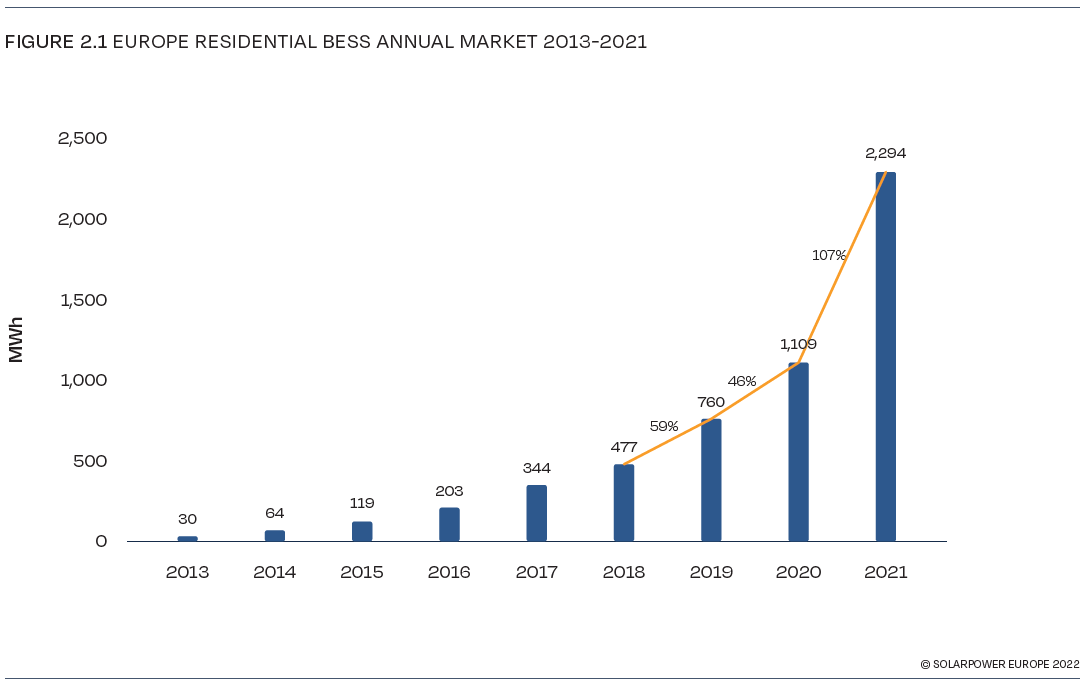The annual report published by Solar Power Europe highlights of the European storage market trend in the period 2022 – 2026.
Energy crisis, pollution and climate change take European citizens to consider the self-generation of electricity from solar sources leading to the consequent increase in the requests for R-BESS, residential storage batteries.
2020 touched by lockdown, 2021 other new crises
After the slowdown of the economy due to COVID-19 in 2020, markets begin to move in 2021, leading to an increase in energy demand – also in the residential sector – with the direct consequence of an increase in prices.
So much so that in the EU the price of electricity in 2021 surpasses 0.19EUR/kWh for the first time, continuing to grow throughout the year. 2022, marked by the Russian invasion of Ukraine, has led energy prices to reach significant peaks.
In this general situation, many individuals turn to solar energy to reduce both bill costs and environmental impact.
Technological development has also led to a reduction of solar photovoltaics costs, making this energy the most convenient in several geographical areas.
Installed increase
Installed capacity increase doubled from 2020 to 2021, going from 1 GWh to 2.3 GWh until it reached 3.9 GWh in 2022.
In 2022 the increae could have been even higher, unfortunately it is limited due to a lack of installers and raw materials.
By 2026, the average scenario aims to achieve 300% increase in total installed capacity, reaching 32.2 GWh. The prospect instead in a high scenario is to reach more than 44 GWh.
Global strategy to reach at least 200GW of storage by 2030
In order to accelerate the storage growth in Europe, a global storage strategy must be implemented to reach at least 200 GW by 2030. In Europe, the largest storage market is Germany, which reaches 59% in 2021, showing how well-planned incentive policies are essential to kick-start the storage battery sector.
It’s time for European politicians to recognize the signals coming from citizens, who increasingly seek to have higher control over the cost of energy, which is convenient and green, in other words it translates into demand for solar energy and storage batteries.
The major European markets are Germany, Italy, Austria and the UK
While more and more national markets are turning to solar and storage as a way to reduce dependence on electricity price volatility by scaling up self-produced green energy, the uptake of this technology is still largely driven by a handful of countries.
In 2022, the 4 largest European residential storage markets are Germany, Italy, Austria and the UK, which from the medium scenario will also be confirmed in 2023. Sweden and Poland will probably reach 3rd and 4th place in 2026.







